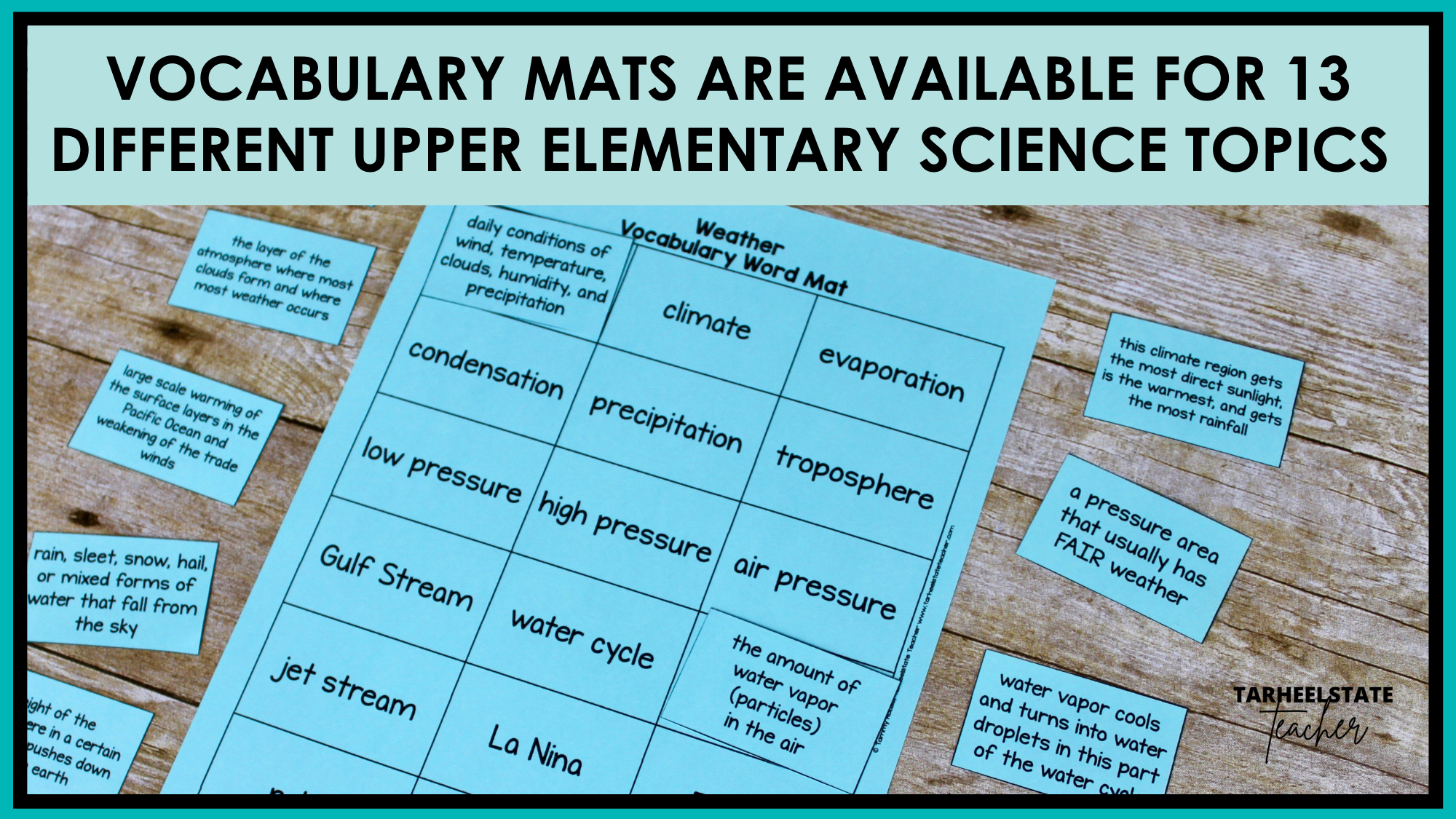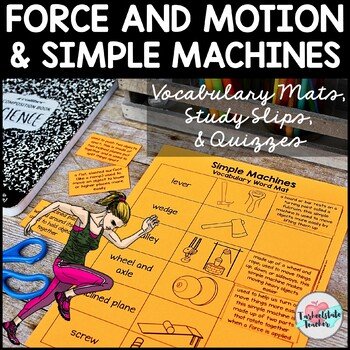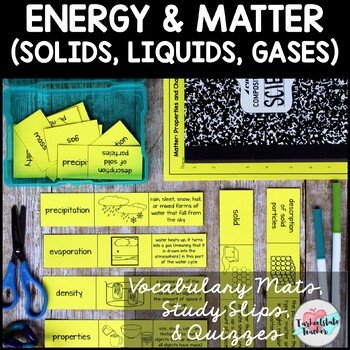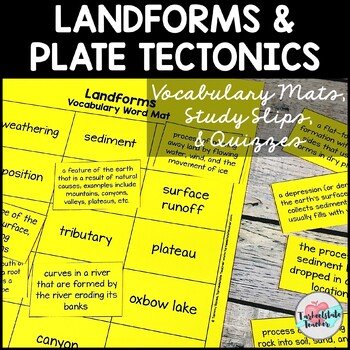Science Vocabulary Activities and Ideas for Launching your Science Units
In my pursuit of trying to understand how to help students master content-area vocabulary, a few activities and ideas became my "go-to" science vocabulary activities that I use each time I launch a new unit. These are fun, engage students in thinking about science concepts right away, and serve many purposes for me as I start my science units.
I often think of my students' brains as a huge room filled with filing cabinets. My goal is to:
Gain access to the room (sometimes the biggest feat of them all!)
Access the file folder that relates to the content I am teaching (Yes, tapping into PRIOR KNOWLEDGE!)
Attach new conceptual understanding and skills to the file before carefully placing it back where it belongs (NEW LEARNING, what? what!)
Simple enough, right?
The problem is there are so many steps along the way where the ball can easily get dropped and the information/understanding/skill doesn't get filed away into students' long-term memory.
How do we get new information to "stick" and stay so that it is accessible not just for the duration of our unit or grade level, but as a permanent fixture ready to be accessed whenever it is needed?
I think that VOCABULARY MASTERY is one of the places where the ball of all of the above gets dropped.
Think about it...students have "experienced" content in previous years, they have read about the content (potentially glazing over the vocabulary words that the *teacher* knows are important for the content), and they have probably been quizzed or tested on the content---only to move on to the next grade level without really being able to ACCESS their "learning" quickly to attain new concepts.
I think this is because we often don't spend enough time helping students access and master the vocabulary of the content area. We don't spend enough time having them work with and utilize the VOCABULARY of the domain.
> > >We busy our students with ACTIVITIES and then wonder why they don't remember things. (Believe me, #ImGUILTY!)
Engaging & Assessing Students' Background Knowledge at the Beginning of Your Unit
At the beginning of our science units, I use three main strategies to assess students' background knowledge and expose them to key vocabulary that they will need to master. (This works for social studies and other content-areas too!)
First, I prepare a list of key words for the unit, including a few words that are not necessarily new for our grade-level, but that will provide students with some words that they feel confident about. You can read more about the process my grade-level team went through to identify our "tier-3" key vocabulary for our units in this post.
I type these words in large font, copied onto card stock, and laminated them for posting in the classroom. I use these word lists with the following strategies:
1) Vocabulary Knowledge Continuum
Using the list of words I have drafted, I play a game of 4 corners with my students using the 4 levels of word knowledge:
1) The word is totally new to me
2) I've heard or seen the word before, but I'm not sure what it means.
3) I know one definition could use the word in a sentence.
4) I know many ways this word can be used, can explain the word, and can give examples.
I post these posters in the corners of the room and have students move around to their "word knowledge" comfort level as I call out the vocabulary words. (I use a bell to get their attention when they have moved to a new spot and are noisy. I try to keep the game moving, and I am also taking mental notes on the words that students think they know and the words that are new to nearly everyone).
After the 4-Corners game is over, I like to make a class word knowledge continuum to post in the room. I tend to go on the lower end of where most of students feel their comfort level is with the words. This makes a great classroom display that you can refer back to again and again as you work through your unit, moving the words as students' word knowledge increases.
2) Categorize and Label
After students have had some exposure to the words (hearing them read aloud and getting to think about whether or not they know the words' meanings), I give students a copy of the vocabulary words and have them work independently to sort the words into groups that make sense based on their prior knowledge.
After sorting all words, students write a label or phrase for each group. While I use this at the beginning of a unit, it is also a great strategy to have students sort the words throughout the unit to show growth in knowledge–students' groupings should become more precisely based on the relationships between the words as the unit goes on.
After I implemented this strategy a few times with students using pencil and paper, I figured out two ways to make the "categorize and label" activity more interactive.
I started printing the vocabulary on card stock for students to have vocabulary cards for actively sorting the words. This made it easier for students to consider their groupings and move words to different categories if they changed their minds.
I've also given each student a word and allowed them to move around the room, silently grouping themselves. From this activity, I can tack their groupings to a bulletin board and we continually refer back to the list as we learn new things. Throughout the unit, students give me feedback on how to re-arrange the words.
3) Vocabulary Mat Strategy:
Vocabulary Mats are LITERALLY the ONE GO TO SCIENCE VOCABULARY strategy that I CANNOT TEACH WITHOUT.
Watch the video below to see the vocabulary mats strategy in action - then keep reading to learn more!
Years ago, in response to our state science test for 5th graders, I came up with Vocabulary Mats as an alternative to flash cards or match up games where students have both the vocabulary word and the definition cards cut apart. I have found that too many cards can be a lot to manage and really impede students’ ability to study their vocabulary words.
To use the vocabulary mats, the “mat” that contains the vocabulary words stays intact. The definitions are on another mat and are cut apart.
Why do I have students cut apart the definitions versus the words? I have found that this encourages and forces students to have to read the definitions when they are sorting cards onto the mats.
To use this activity to assess and activate prior knowledge, I have students prepare their mat activity during the first week of our unit (after completing activity 1-2 above).
Students read the definitions and lay them onto the vocabulary word that they think is being described. This is a great way to see how well students know the vocabulary and it is a good PRE-ASSESSMENT before you get into your learning activities for the unit.
I like to pull this activity out again and again so that students demonstrate greater mastery of the vocabulary words and get more practice with matching them up.
Each time students get to engage with their vocabulary mat, they 1) find that they have mastered new words and 2) they have the opportunity to add a few more words to their long-term memory files.
SEEING MY STUDENTS MAKE PROGRESS on just about anything makes my heart happy! And, vocabulary mats are one of the places in my teaching where I know students are showing growth!
Science Vocabulary ideas has become a mini-blog series this month!
You may also be interested in reading:
→ A Process for Identifying Your Tier 3 (KEY) Content-Area Vocabulary
→ More about Vocabulary Mats: My FAVORITE Science Study Strategy
→ Interactive Ideas for your Science Word Wall
If you are interested in adding VOCABULARY MATS to your SCIENCE routines, you can check out the Vocabulary Mats I have available.
Although the resources are set up as vocabulary mats, you can also use the word mats for activities 1-2 by making extra copies for students to create graphic organizers and sort the words on the word knowledge continuum.














